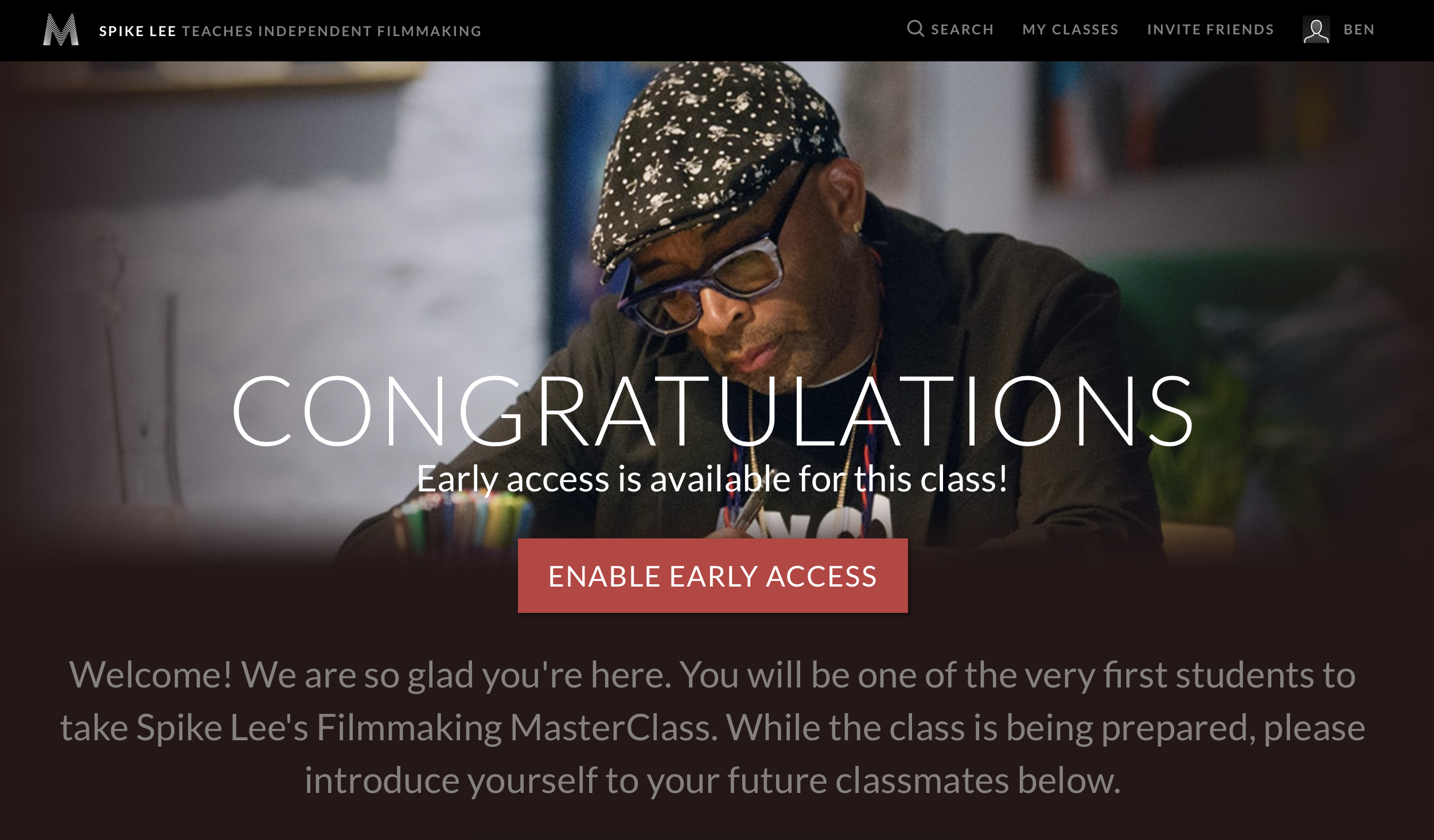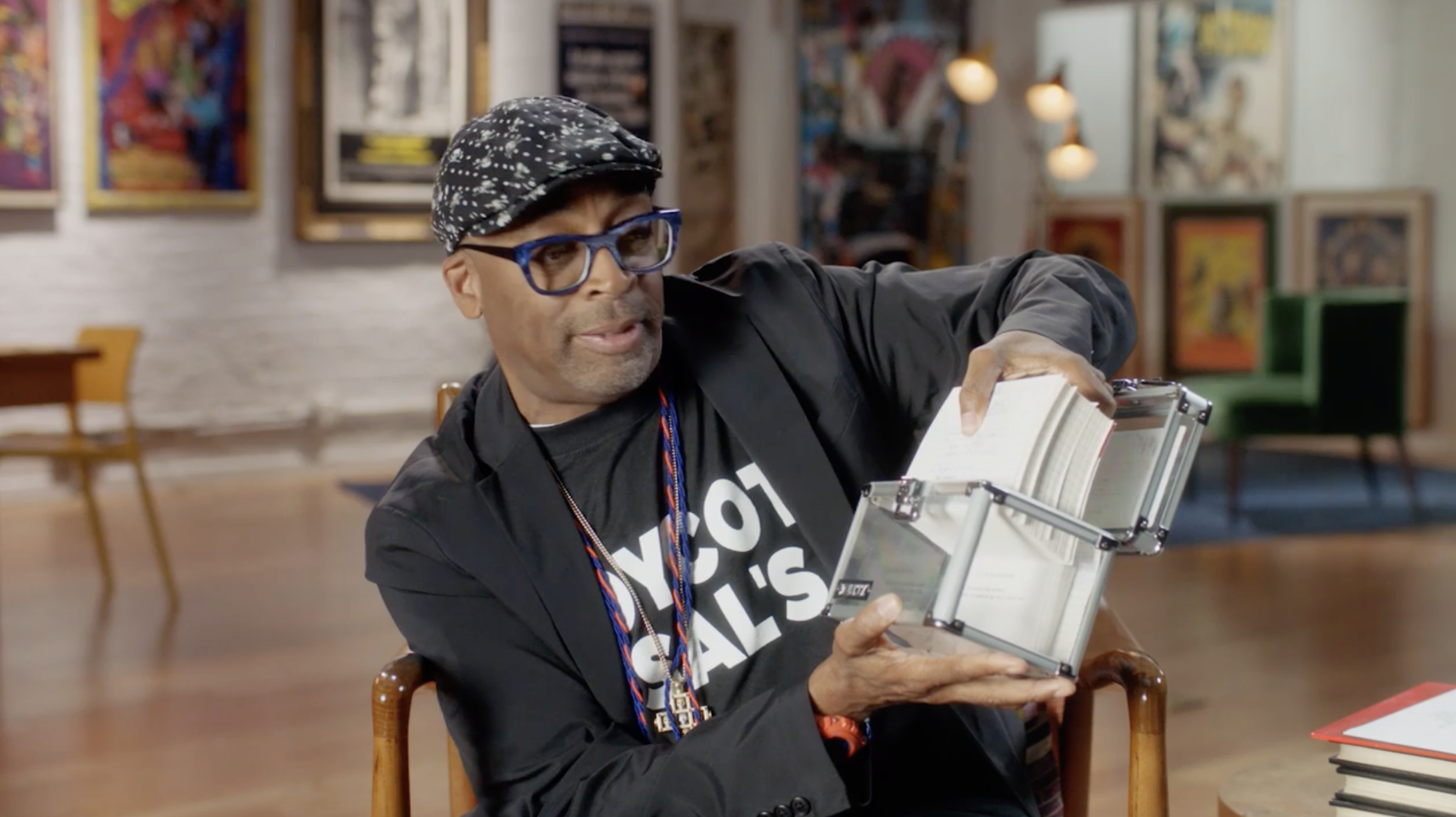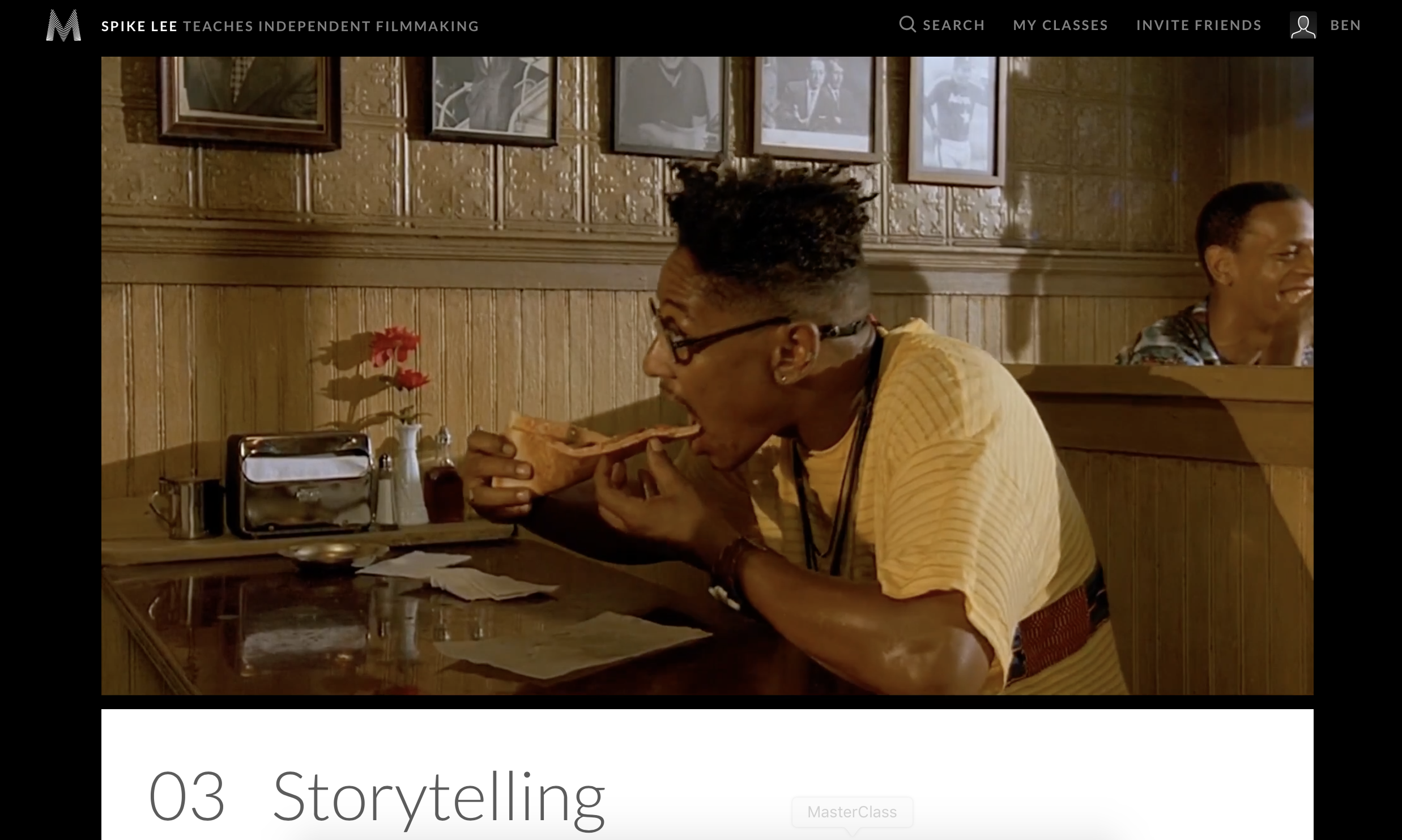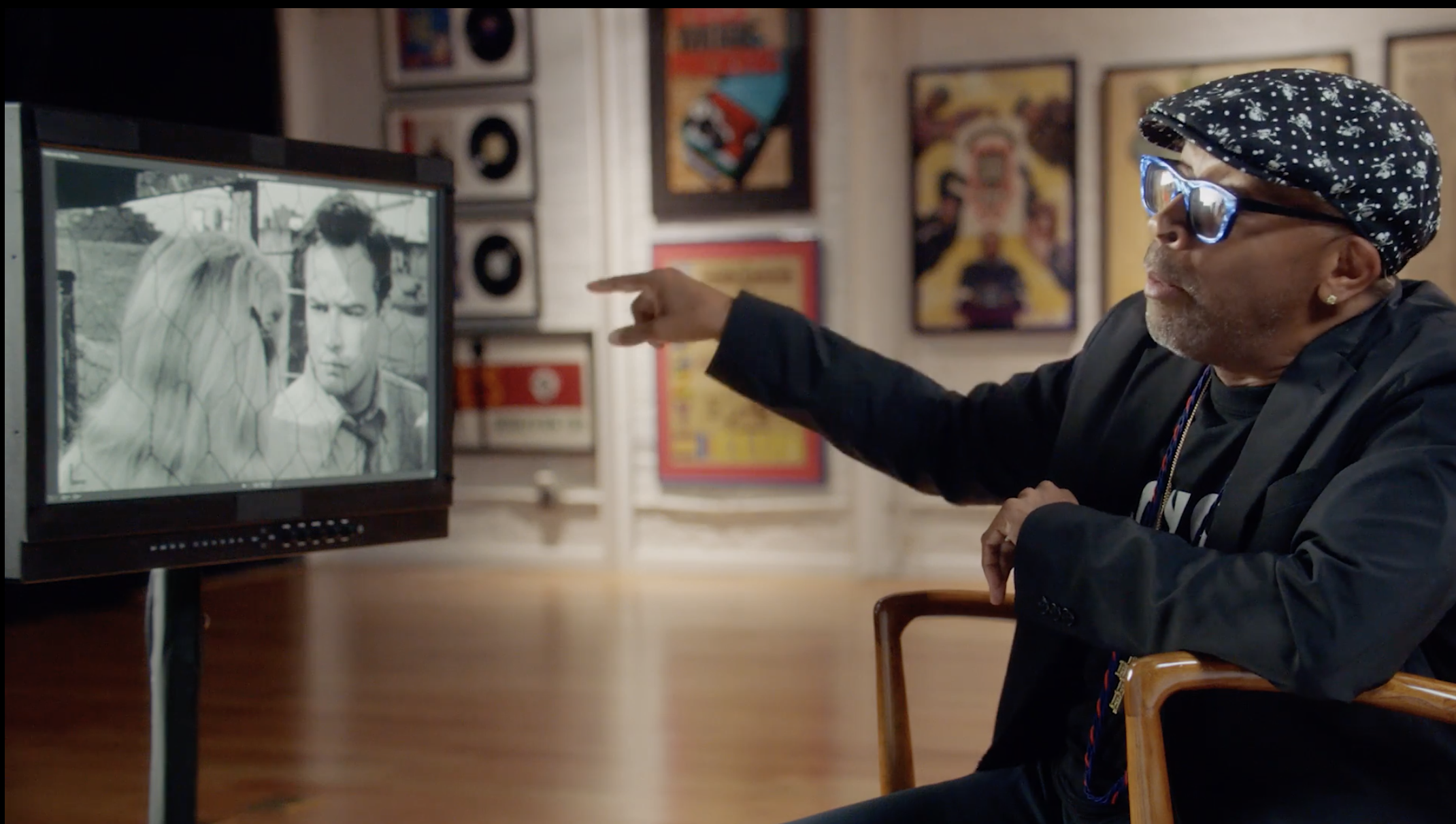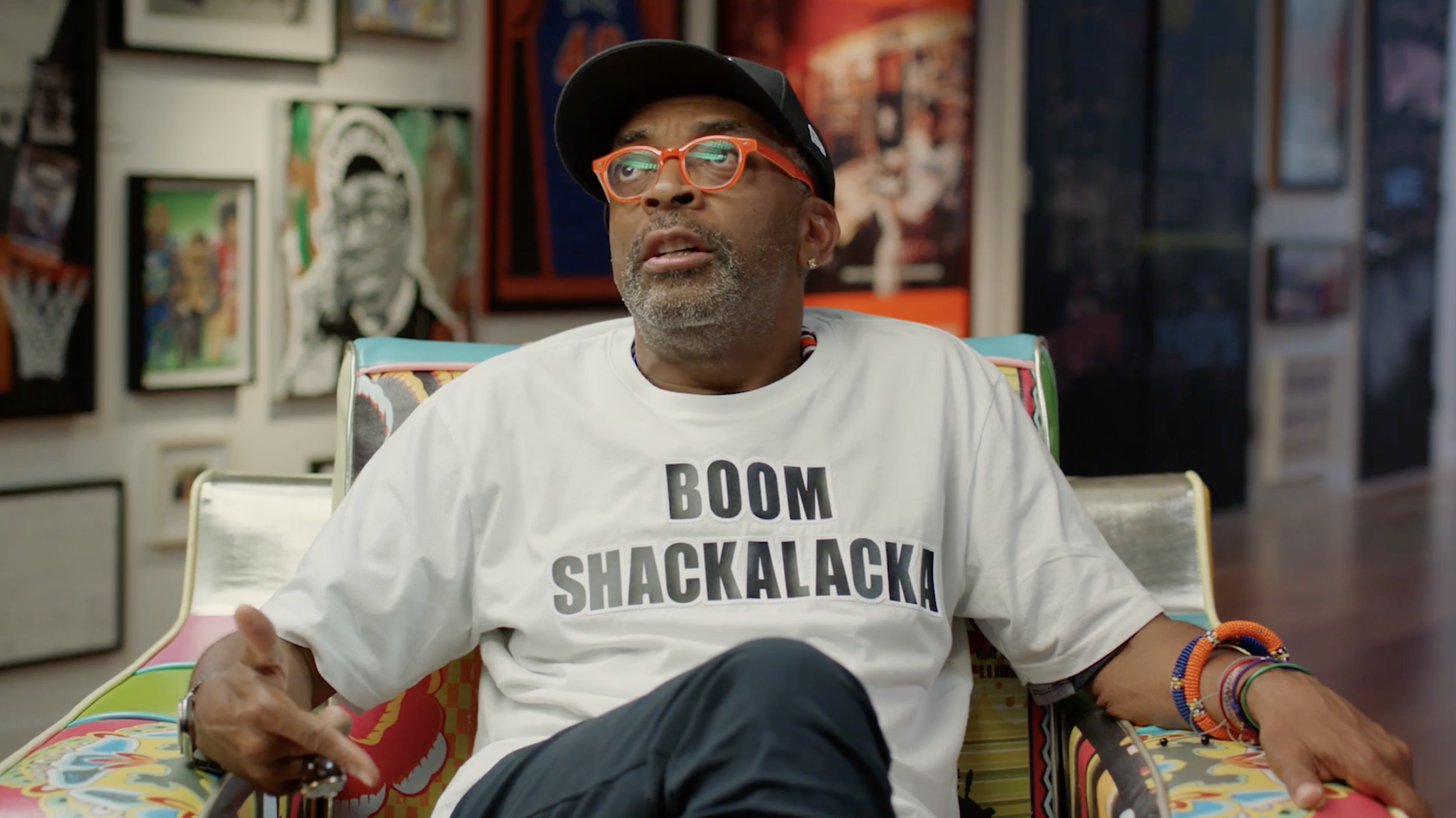MasterClass continue to be full of surprises. It’s like they’ve gathered all my heroes in one area and it doesn’t seem like their A-list catalogue is going to halt anytime soon.
Man, I love kicking back with a Spike Lee joint. So when I logged into my All Access Pass area (to sink my teeth into another class), I was very pleasantly surprised to see the Spike Lee Teaches Independent Filmmaking MasterClass.
If you know Spike Lee, you already know what you’re getting with this MasterClass.
Or at least you think you know.
You know Spike’s style but you won’t be expecting how full of surprises this class is. And with 19 video modules and over 3 hours of content plus a workbook filled with exercises further things to study, you’ve got A LOT of surprises in store for you.
Spike Lee Teaches Independent Filmmaking MasterClass Review
The MasterClass kicks off with Spike laying out his aims to teach you film grammar so that the words on the paper can come to life.
Then Spike pulls us straight into how to put words on paper.
We get the blueprint of Spike Lee’s writing process.
And learn how to use index cards to write a script, learn some discipline techniques, and also how to work with a partner.
This was a fascinating process and one that was really appealing to me.
I’ve never done it this way before but I felt a real desire to try it out like it might just gel really well with my personality.
I’m already putting it into action and really loving the feel of putting a script together this way.
We also get to see his longhand first edition script of Bamboozled. What a treat that was.
Have you ever thought about writing a film script longhand??
You’ll definitely wanna try it after Spike Lee walks you through how he does it.
By the way, this is definitely one of the coolest MasterClasses.
You can tell that immediately.
The production, editing, set design, music…
All of it feels so Spike Lee and really gets into your soul.
What a way to run a class and learn something.
Spike’s advice about how to write a 120-page screenplay was simple yet calming and effective.
Spike’s got the mentor vibe down because you can’t help but feel at ease and knowing exactly what to do after you listen to him.
There’s also a ton of great advice not just related to the process (using examples like the upcoming BlacKkKlansman) but also important advice on what not to do…
Spike tells us the one thing you really need to avoid otherwise it might end your career before it starts.
Spike Lee goes deep into his philosophy of storytelling.
You learn all about developing a unique voice and bold character creation. All about how to get to the ugly truth of your characters and separating characters from yourself.
Spike uses Do The Right Thing to hammer home his storytelling lessons.
I really love the fact that we can watch actual scenes of the movies alongside Spike’s commentary while he’s trying to teach you a specific lesson (e.g. about story or character).
This REALLY makes the class come ALIVE and gives it a vibrant dynamic that makes you forget about where the time’s going.
I loved seeing how to create conflict between two characters. Characters that are both are right, both have their beliefs, and shit gets real dramatic as they start to butt heads.
Spike Lee never thinks about first, second, or third acts when he writes.
This was very interesting. Another area which differs from so many storytelling/writing/directing/filmmaking classes.
I’ve never really believed there’s only one way to do anything, especially tell a story.
I loved hearing about high concepts, using further analysis of BlacKkKlansman (which I can’t wait to see).
And then we hit a part of the course where my head exploded with excitement.
This section is called “Speaking truth to power” and involves Spike Lee analysing one of my favourite, and one of his favourite, films of all time: On The Waterfront.
This was freaking AWESOME.
I salivated the whole way through Spike’s analysis of On The Waterfront.
Spike Lee’s passion is infectious. Especially when he’s screaming at the screen and linking Marlon Brando’s character of Terry Malloy to the real-life story of Colin Kaepernick.
Spike Lee’s MasterClass really is a mini-film school.
After you’ve been immersed in a bunch of creative lessons, Spike then takes the class in another direction and starts teaching you about the business side of filmmaking.
We learn all about his budgeting strategy and how before Spike even writes a word of the script he’s figuring out how much money he can raise to make the film.
Do the film that you can raise the money for.
Such a rich and relevant discussion about how we have ideal visions for scenes but the need to compromise if you don’t have the money.
If you’re a first time indie filmmaker and you’re on a budget, this is the course you because budget and money restraints are themes that run through the class over and over again.
Spike takes us through how compromise leads to creativity and something better than what you originally planned. How to managed crews and shoot on location. How to get people working for deferment (very damn interesting).
And then we get into the Malcolm X case study and learn about how Spike Lee and everyone else knew from the start they didn’t have the money to finish it.
It was fascinating to learn how he overcame the budget problems.
Then we get into the importance of casting.
This was one of the longest and most in-depth lessons. Why? Because as Spike explains it at the start:
The wrong actors, the wrong roles could turn out the wrong movie.
And then Spike dives straight into giving us a masterclass on casting alone so you can pick the right actors for the right roles and make the right movie.
I really loved the abundance of case studies here.
We get into chemistry, seeking out new talent, collaborating with your director of photography, and how to audition everybody – actors, editors, directors of photography – what to look for, what to ask.
After learning how to get others to help elevate your vision, we’re back into the details of storytelling.
One of my favourite parts of the masterclass was “Storytelling with camera coverage”.
Spike walks us through all the camera angles and techniques that comprise his iconic style and he breaks down how he utilises each one in order to heighten the drama, increase the tension, and better serve the story.
Spike shows us how to contrast characters through camera placement.
We get a wonderful examination of camera techniques in Do The Right Thing (you can already guess the ones Spike talks about – after all, they’re iconic) and also the camera techniques in Mo’ Better Blues and 25th Hour.
Listening to Spike Lee talk really drives you forward with a sense of creativity and fun.
When you know what you’re doing, you can really have fun subverting all the rules (e.g. Like in the dolly shots with Samuel L. Jackson in Do The Right Thing).
Spike Lee talks slowly when it’s one-on-one and everything he says is evocative, practical, and inspirational – often funny and wise too.
But stick Spike in front of a screen with either one of his movies playing or one of his favourites from another direction and he EXPLODES.
Spike gets loud, passionate, quick-talking, and you can’t help but get swept away in it.
If I had one criticism of the masterclass it’s that I wish certain parts had been longer. Especially when learning about storyboards using Malcolm X as a case study. It was great but I wanted more!
Most of the lessons are long and the course as a whole is pretty standard length for a MasterClass, but me wishing it to be longer is testament to just how fascinating I found it.
After going into how to direct actors, establish trust and respect, how to get their best performance, bond with the cast (I love his techniques), and all about readthroughs, rehearsals, and collaborations, we get into more of some of my favourite parts of the course.
Opening title sequences!
We analyse Mo’ Better Blues, 25th Hour, and BlacKkKlansman to learn how to establish tone right from the start of your film.
Spike teaches you all about colour, music, graphics and how to use them to set the mood and get the audience prepared for your joint.
We learn about score and style from Mo’ Better Blues, setting the vibe in the 25th Hour, and how to make the period contemporary in BlacKkKlansman.
Brilliant stuff here. Again, there’s no holding back. We get to watch and analyse the openings to these films along with Spike giving us his rationale for each aesthetic choice frame by frame.
Another one of my favourite parts of the masterclass is where we learn how to use score to enhance the drama, how to work with a composer, how to turn source into score, and using music as a counterpoint.
The advice here is really detailed, fascinating, and illuminating.
Hearing Spike’s process makes this particularly difficult topic seem much more achievable.
The counterpoint discussion and case study in particular was extremely interesting, especially if you don’t fully understand how to use the power of juxtaposition.
Then we get into editing and this was a really stand-out lesson.
Long, in-depth, interesting, with tons of practical advise.
Very powerful stuff and worth repeat viewings.
As the masterclass begins to wind down, we get deep into a topic close to Spike Lee’s heart:
Film as an agent of change.
Spike gets heavy into false narratives in cinema, hitting particularly hard on injustices against black people.
This is a theme, as is oppression against other demographics, all through this MasterClass – as you would expect from Spike Lee – but this particular module is a fitting seeing-off to a certain kind of filmmaker.
Let’s face it. If you’re choosing to learn from Spike Lee, you are that certain kind of filmmaker.
A filmmaker who has something to say, a belief that is rock solid and understands the social consequences of the moving image and how you can serve in a positive direction.
We learn all about Spike’s cinematic mission and how to redefine the industry and push back the gatekeepers.
The great thing about this MasterClass is that Spike Lee never gives generic advice.
He always catches you off guard with something wise and unexpected and oftentimes I had to rewind and pause so I could catch it again and note his advice down.
The Spike Lee Teaches Independent Filmmaking MasterClass is for students are serious and ready to dedicate themselves to the process.
It’s a hell of a lot of fun, but the message at the core of this course is passion, love, dedication, education, and work.
If that sounds as good to you as it does to me, you should definitely check out the course or think about grabbing the All Access Pass if you want to learn from all the other A-list filmmakers at MasterClass.
You can enrol in the Spike Lee Teaches Filmmaking MasterClass here.
